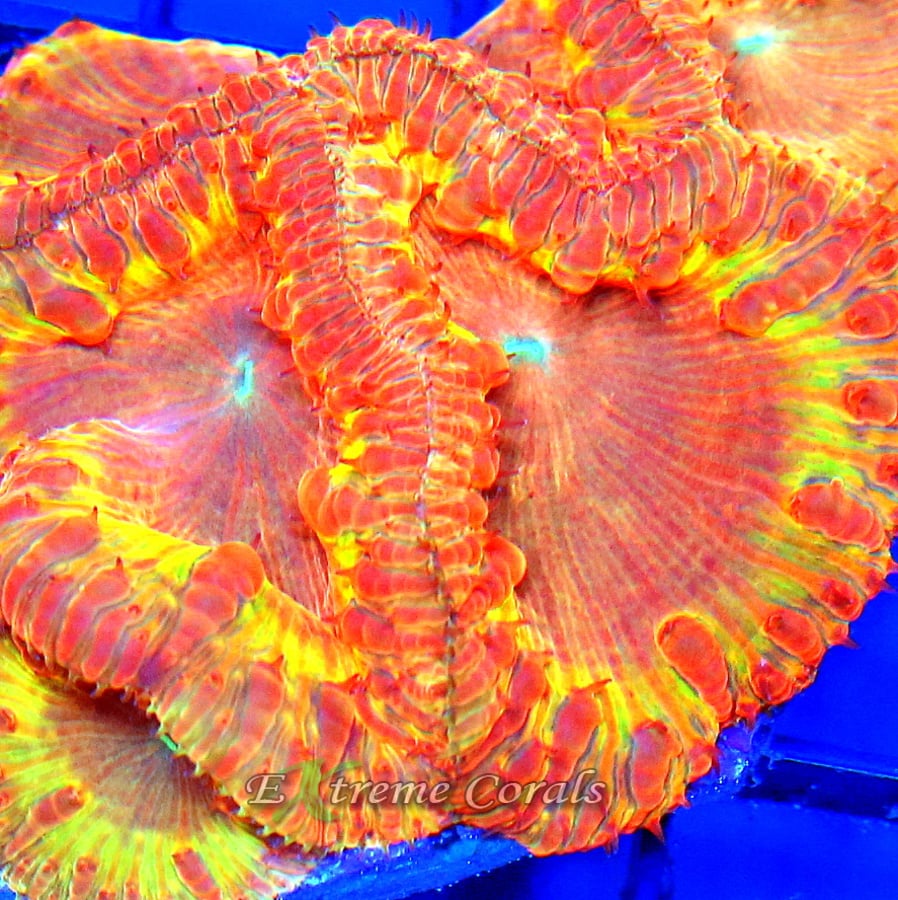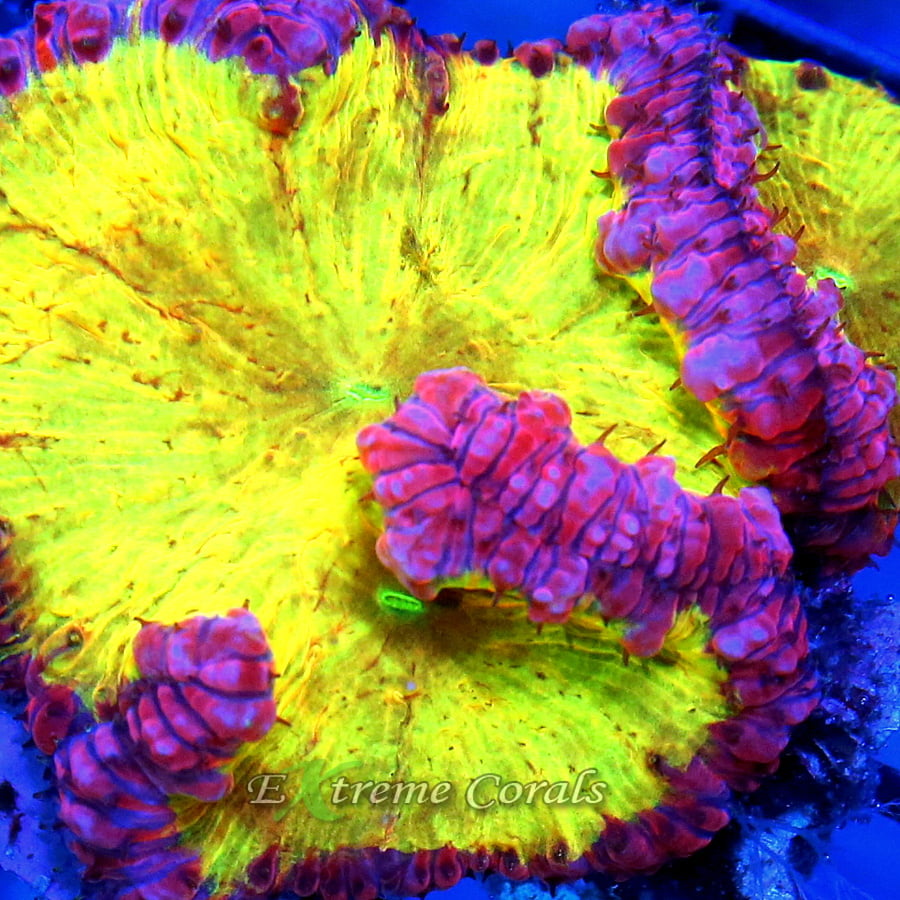Extreme Corals News and Updates
Comprehensive Guide to Caring for Blastomussa Corals in Your Reef Aquarium
Essential Tips and Techniques for Maintaining Vibrant and Healthy Blastomussa Corals
Blastomussa corals are a vibrant and hardy choice for reef aquariums, perfect for beginners and experienced hobbyists alike. This guide covers essential care tips, ideal tank conditions, and troubleshooting common issues to help you maintain healthy and beautiful Blastomussa corals.
by scott Shiles • May 29, 2024
Introduction to Blastomussa Corals
Blastomussa corals, commonly known as Blastos, are a favorite among reef aquarium enthusiasts due to their vibrant colors and hardy nature. These Large Polyp Stony corals, ideal for both beginners and experienced hobbyists, feature large fleshy polyps that extend from a hard skeleton. Adding Blastomussa corals to your reef tank enhances its beauty and diversity, making them an essential addition for coral lovers.
Why Blastomussa Corals are Ideal for Reef Aquariums

Blastomussa corals are perfect for reef aquariums because they are resilient and easy to care for. They thrive in various lighting and flow conditions, making them suitable for reef keepers of all skill levels. Known for their slow growth rate, Blastomussa corals reduce the risk of overcrowding in your tank. Additionally, their adaptability to different water parameters makes them a versatile and low-maintenance choice for any reef aquarium.
Characteristics of Blastomussa Corals
Blastomussa corals are renowned for their vibrant colors and compact, round shape. They have large polyps that extend to catch food and display fluorescent properties under appropriate lighting. These corals prefer moderate to high light levels and gentle water flow to maintain their health and coloration. Being non-aggressive, they can be placed near other coral species without issues. Popular species like Blastomussa wellsi and Blastomussa merleti are favored for their striking appearance and ease of care.
Tips for Caring for Blastomussa Corals
Proper care is essential for maintaining healthy Blastomussa corals in your reef aquarium. Here are some tips:
- Maintain Stable Water Parameters: Keep the water temperature between 75°F and 80°F, and maintain a pH level between 8.1 and 8.4. Consistent water parameters are crucial for coral health (Borneman, 2001).
- Provide Adequate Lighting: Blastomussa corals require moderate to high lighting levels. Position them in the middle to lower parts of your tank to ensure they receive indirect light, which is beneficial for their growth (Sprung, 2006).
- Ensure Proper Water Flow: These corals thrive in moderate to high water flow. Use powerheads or wavemakers to create gentle water movement that helps prevent detritus buildup and promotes coral health.
- Feed Regularly: Feed Blastomussa corals with small particle foods like zooplankton or phytoplankton twice a week. Target feeding ensures each coral receives adequate nutrition, promoting growth and vibrant coloration (Delbeek & Sprung, 2005).
- Monitor for Pests and Diseases: Regularly check for pests like flatworms or nudibranchs. If you spot any issues, take immediate action to treat them and protect your corals.
Ideal Tank Conditions for Blastomussa Corals
Blastomussa corals thrive in well-established reef aquariums with stable water parameters. Ideal conditions include:
- Water Temperature: 75°F to 80°F.
- Water Flow: Moderate to high flow to keep corals healthy and prevent detritus buildup.
- Lighting: Moderate to high lighting levels, preferably with a mix of blue and white LEDs.
- Salinity: Maintain salinity levels between 1.024 and 1.026.
- pH: Keep pH levels between 8.1 and 8.4.
- Alkalinity: Aim for 8 to 11 dKH.
- Nutrient Levels: Regular water changes and efficient skimming to prevent algae growth.
- Placement: Lower to middle parts of the aquarium for optimal lighting and water flow.
Feeding Blastomussa Corals
Blastomussa corals can survive on the nutrients available in your aquarium, but to promote growth, feed them with small zooplankton or liquid coral food. Target feed each coral individually to ensure adequate nutrition. Avoid overfeeding to maintain water quality.
Placing and Positioning Blastomussa Corals in Your Aquarium
When placing Blastomussa corals:
- Lighting: Position them in areas with moderate to low light levels.
- Water Flow: Ensure gentle water movement for efficient food capture.
- Space: Allow enough space for expansion without touching other corals.
- Attachment: Secure them to rockwork to prevent falling or damage.
- Location: Place at mid to lower levels in the tank for optimal conditions.
Common Issues and Troubleshooting
Blastomussa corals might face issues such as bleaching due to stress. Here are some troubleshooting tips:
- Lighting: Ensure they receive moderate to high lighting.
- Water Parameters: Maintain stable temperature, salinity, and pH.
- Feeding: Provide a balanced diet of phytoplankton or zooplankton.
- Pest Monitoring: Watch for pests like flatworms or nudibranchs and take action immediately.
- Quarantine: Quarantine new additions to prevent disease or parasite introduction.
Enhance Your Reef Aquarium with Blastomussa Corals
Adding Blastomussa corals to your reef aquarium introduces vibrant colors and diverse shapes, enhancing its beauty. These corals are a must-have for any reef enthusiast, offering a dynamic underwater ecosystem that impresses all observers. Explore the various types of Blastomussa corals and bring a touch of the ocean's splendor into your home aquarium.
References
- Borneman, E. H. (2001). Aquarium Corals: Selection, Husbandry, and Natural History. Microcosm Ltd.
- Delbeek, J. C., & Sprung, J. (2005). The Reef Aquarium: A Comprehensive Guide to the Identification and Care of Tropical Marine Invertebrates. Ricordea Publishing.
- Sprung, J. (2006). Corals: A Quick Reference Guide. Ricordea Publishing.

